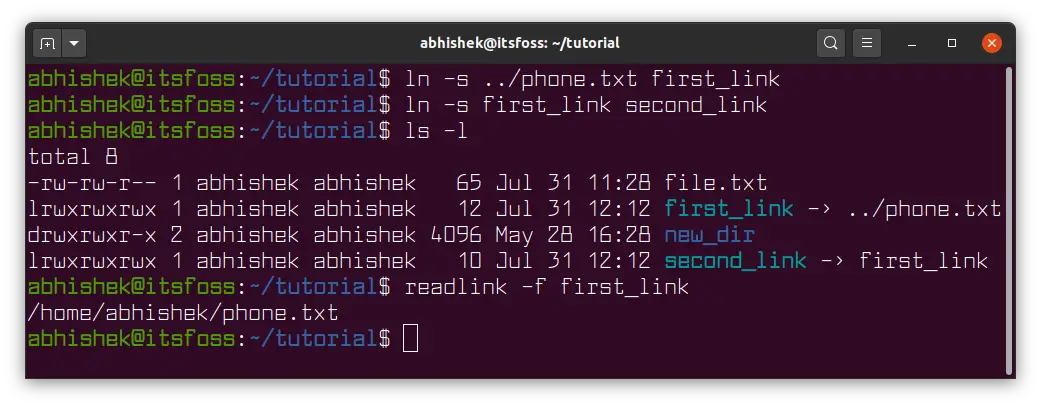

You can use normal file management commands (for example, cp, rm) on the symbolic link. A symbolic link is like a file pointing to another pathname. After you've made the symbolic link, you can perform an operation on or execute myfile, just as you could with the source_file. The ln command then creates the symbolic link. Replace myfile with the name of the symbolic link.
Linux soft link example windows#
Symlinks on windows are created by Symlink() which accept only absolute paths but not. It does not know what directory you were in when you created the link. A symbolic link (also known as a soft link) may point to an existing file or to a nonexistent one the latter case is known as a dangling link. When you access the file the stored path is looked up and expanded relative to the file. The path you provide is stored with the file. Replace source_file with the name of the existing file for which you want to create the symbolic link (this file can be any existing file or directory across the file systems). symlink() creates a symbolic link to the existing target with the. Go to the directory you want the link to reside in. It simply points to another entry somewhere in the file system. To create a symbolic link in Unix, at the Unix prompt, enter: ln -s source_file myfile A symbolic link, also termed a soft link, is much like a shortcut in Windows. Also, when you delete a target file, symbolic links to that file become unusable, whereas hard links preserve the contents of the file. This difference gives symbolic links certain qualities that hard links do not have, such as the ability to link to directories, or to files on remote computers networked through NFS. Unlike a hard link, a symbolic link does not contain the data in the target file. It may reference a regular file or a special file. A symbolic link, also termed a soft link, is a special kind of file that points to another file, much like a shortcut in Windows or a Macintosh alias. A symbolic link, often referred to as a symlink, is a reference to another file.


 0 kommentar(er)
0 kommentar(er)
